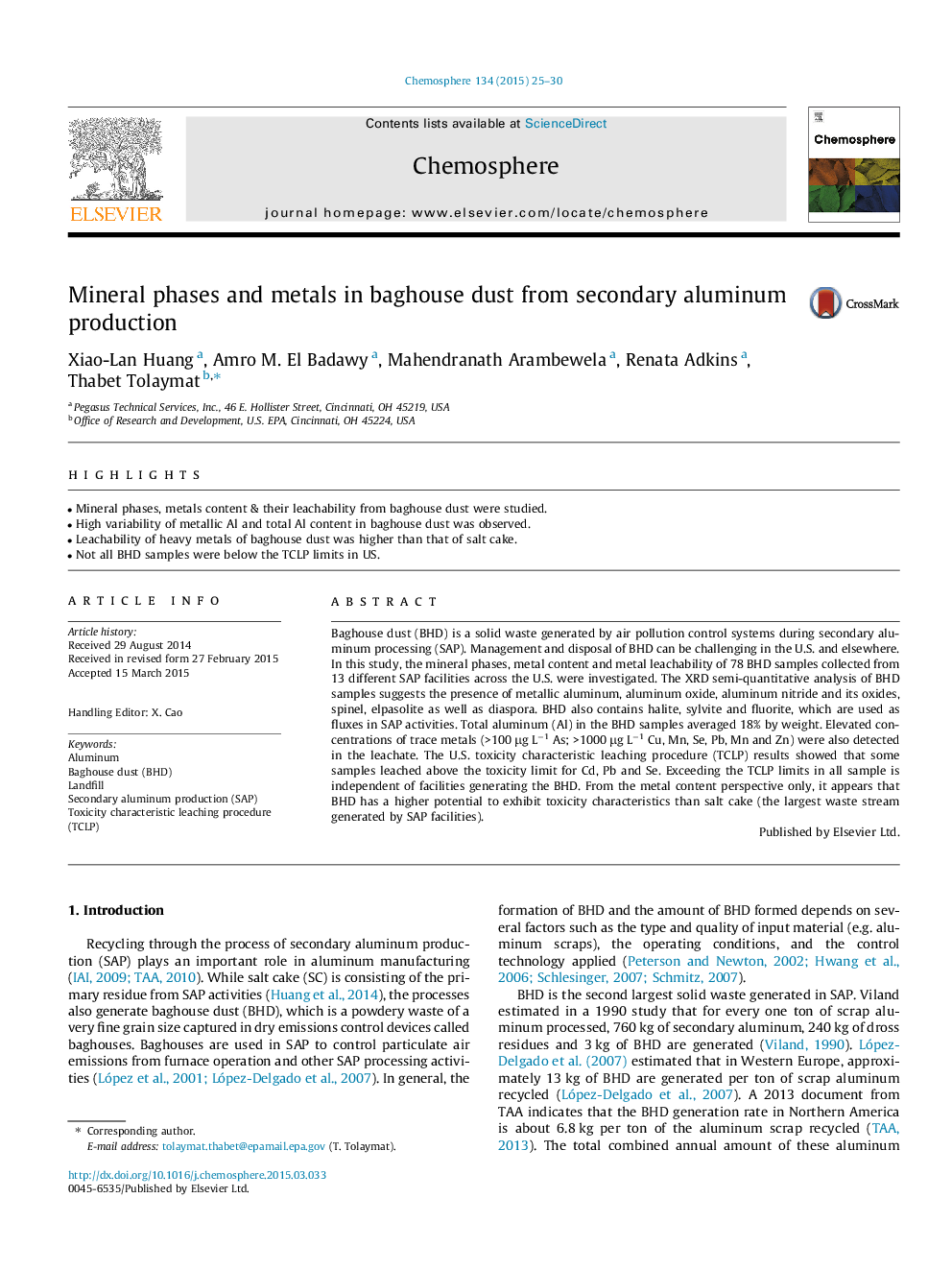| Article ID | Journal | Published Year | Pages | File Type |
|---|---|---|---|---|
| 6307602 | Chemosphere | 2015 | 6 Pages |
Abstract
Baghouse dust (BHD) is a solid waste generated by air pollution control systems during secondary aluminum processing (SAP). Management and disposal of BHD can be challenging in the U.S. and elsewhere. In this study, the mineral phases, metal content and metal leachability of 78 BHD samples collected from 13 different SAP facilities across the U.S. were investigated. The XRD semi-quantitative analysis of BHD samples suggests the presence of metallic aluminum, aluminum oxide, aluminum nitride and its oxides, spinel, elpasolite as well as diaspora. BHD also contains halite, sylvite and fluorite, which are used as fluxes in SAP activities. Total aluminum (Al) in the BHD samples averaged 18% by weight. Elevated concentrations of trace metals (>100 μg Lâ1 As; >1000 μg Lâ1 Cu, Mn, Se, Pb, Mn and Zn) were also detected in the leachate. The U.S. toxicity characteristic leaching procedure (TCLP) results showed that some samples leached above the toxicity limit for Cd, Pb and Se. Exceeding the TCLP limits in all sample is independent of facilities generating the BHD. From the metal content perspective only, it appears that BHD has a higher potential to exhibit toxicity characteristics than salt cake (the largest waste stream generated by SAP facilities).
Related Topics
Life Sciences
Environmental Science
Environmental Chemistry
Authors
Xiao-Lan Huang, Amro M. El Badawy, Mahendranath Arambewela, Renata Adkins, Thabet Tolaymat,
